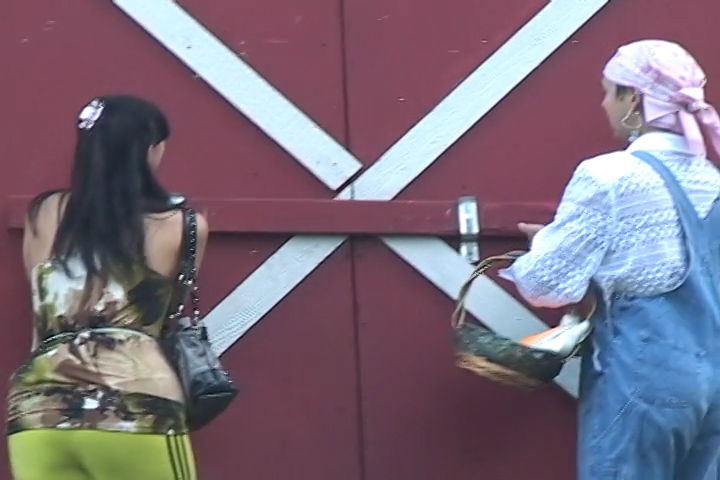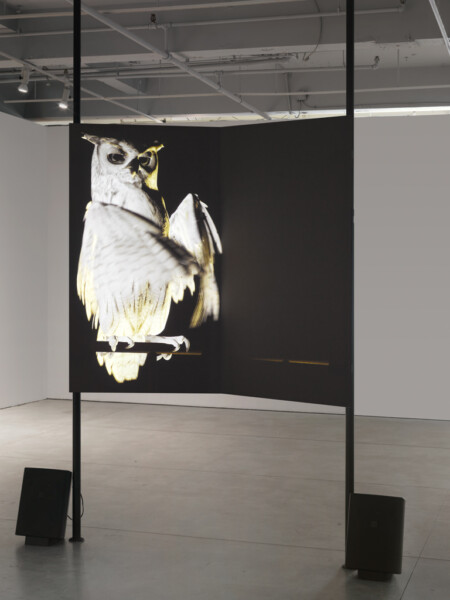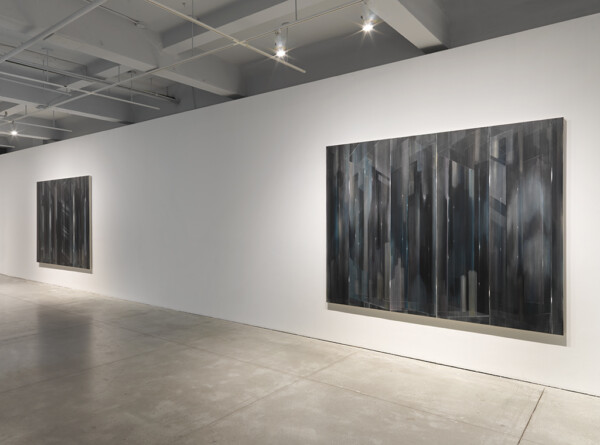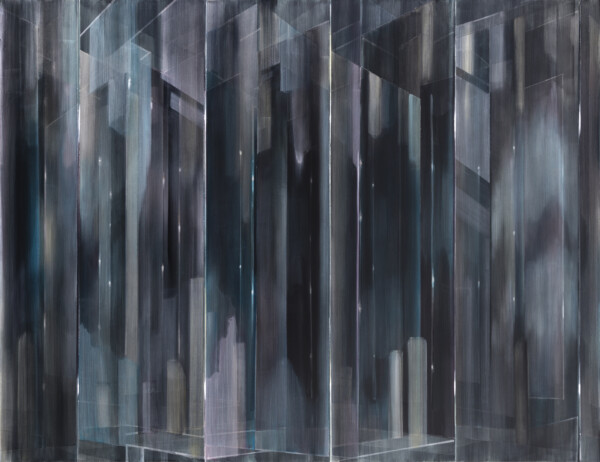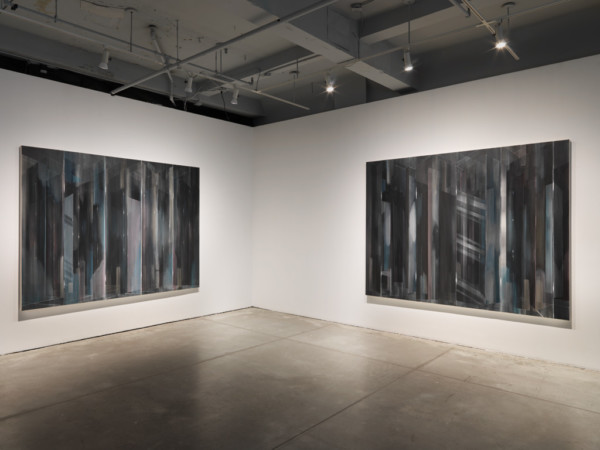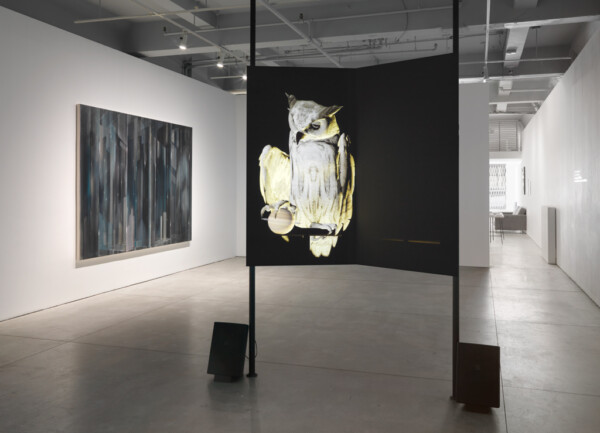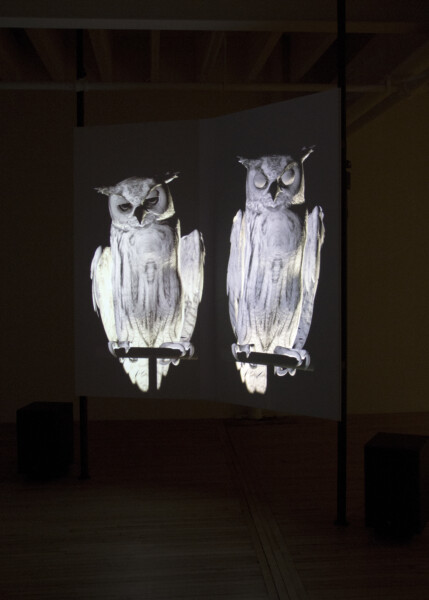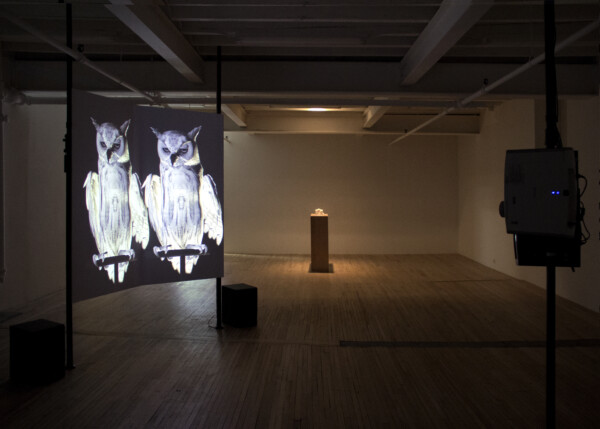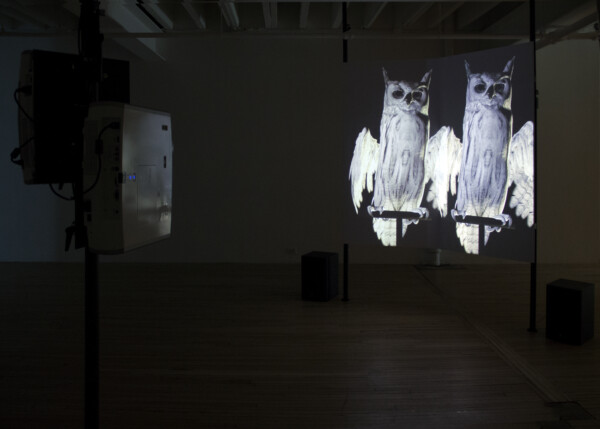- Uncertain Reflections –Ann Lislegaard and Neil Wedman
- Uncertain Reflections –Ann Lislegaard and Neil Wedman
- Uncertain Reflections –Ann Lislegaard and Neil Wedman
- Uncertain Reflections –Ann Lislegaard and Neil Wedman
Uncertain Reflections
Ann Lislegaard and Neil Wedman
4 February–
8 April 2017
Curated by: Mark Lanctôt and Jonathan Middleton

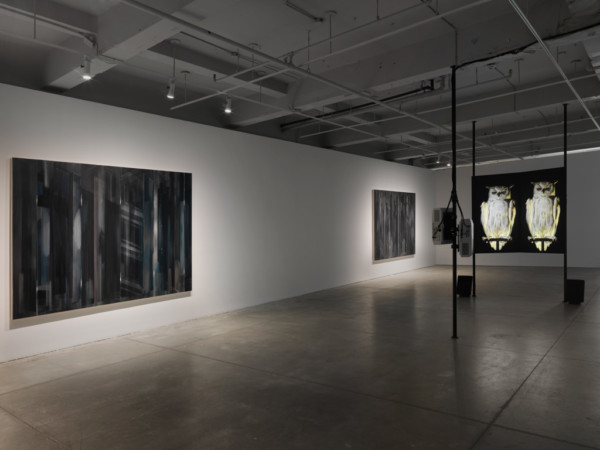
Uncertain Reflections, exhibition at Or Gallery, 2017.
Uncertain Reflections
Ann Lislegaard and Neil Wedman
Curated by: Mark Lanctôt and Jonathan Middleton
“In addition, no one today remembered why the war had come about or who, if anyone, had won. The dust which had contaminated most of the planet’s surface had originated in no country and no one, even the wartime enemy, had planned on it. First, strangely, the owls had died. At the time it had seemed almost funny, the fat, fluffy white birds lying here and there, in yards and on streets; coming out no earlier than twilight as they had while alive the owls escaped notice. Medieval plagues had manifested themselves in a similar way, in the form of many dead rats. This plague, however, had descended from above.”
– Philip K. Dick, Do Androids Dream of Electric Sheep?
The Or Gallery is pleased to present a new exhibition featuring the work of Ann Lislegaard (Copenhagen/New York) and Neil Wedman (Vancouver). Uncertain Reflections features Lislegaard’s video installation Oracles, Owls… Some Animals Never Sleep (2012-2014) and Wedman’s House of Mirrors #1, #2, and #3.
Lislegaard and Wedman’s respective works in this exhibition employ empty mirrors and doubling – subjects that have long been associated with fascination and foreboding, from monstrous doppelgängers to portals that depict hidden aspects of our character, or some future – often calamitous – event. Mirrors also hold the power to obfuscate, distort and confuse.
Oracles in antiquity were intentionally vague and obtuse so as to avoid precise predictions that were less likely to come true. As Lislegaard has remarked: “Oracles are entities that serve as portals to hidden worlds, connecting to what is buried beneath the surface of things.” As such, they were consulted for guidance regarding important matters and events. Lislegaard’s oracle owls pronounce aphorisms and excerpts from the I-Ching as they are interrupted by digitised noise and dialogue taken from Blade Runner, Ridley Scott’s 1982 film adaptation of Philip K. Dick’s 1968 novel Do Androids Dream of Electric Sheep? Their message is garbled, fragmented and confounding.
While mirrors are purported to reflect reality, when assembled in a maze their ability to distort the space they occupy is compounded. The house of mirrors (or “mirror maze”) is a puzzle that has roots in late 19th century Europe, first patented by Gustav and Louis Castan of Berlin. Over the course of the 1890s through the 20th century, halls of mirrors became a mainstay of world fairs and traveling carnivals. The ubiquity of such attractions and their ability to confound human senses make them popular signifiers of physical endangerment and especially mental distress.
Uncertain Reflections marks the sixth of a series of exhibitions and projects curated and produced by Mark Lanctôt and Jonathan Middleton under the title The Troubled Pastoral. The series takes on a broad set of themes including pessimism, psychedelia, altered states and drug use, black comedy, science fiction dystopia, class struggle (within the context of an increasingly marginal or absent middle class), the industrialization of food production, the ragged edge of suburbia, and various forms of visual, aural, or perceptual interference, including smoke, static, and electromagnetic radiation.
Also part of the series and concurrent with this exhibition is A Terrible Signal, curated by Kimberly Phillips at Access Gallery and featuring the work of Megan Hepburn, Daniel Phillips, M.E. Sparks, Carolyn Stockbridge and Joseph Strohan. A Terrible Signal opens on Friday, February 10.
